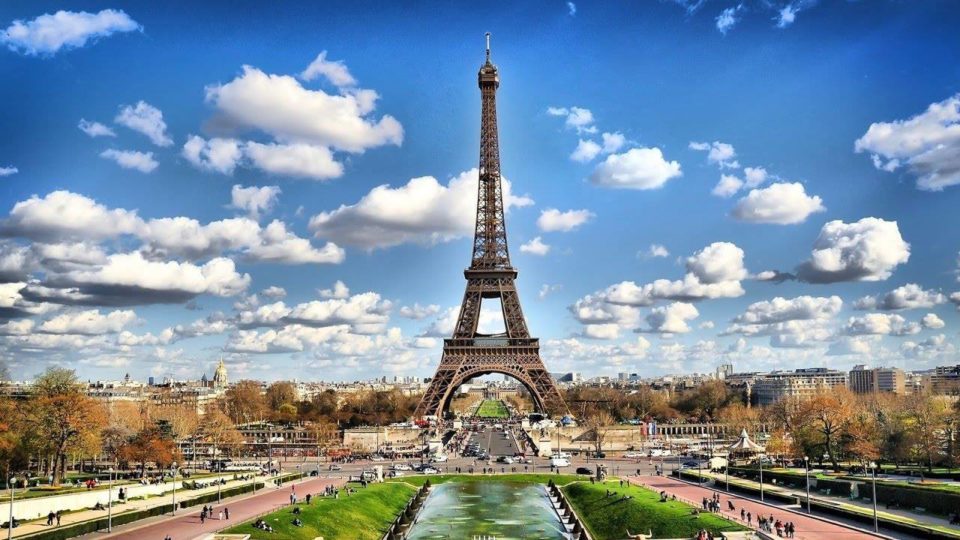Most Famous Monuments and Landmarks In France
Sightseeing in France is like diving into ancient history. You can see remains of the old Roman Lutetia, magnificent medieval abbeys, gothic masterpieces, classical architecture, collections from the Napoleonic era.
An exceptional density of artistic and cultural valuables to choose from at each visit! There are many museums and monuments for your pleasure.
>>Also Read: Most Popular Tourist Attractions in France
Most Famous Monuments in Paris
An exceptional density of artistic and cultural valuables to choose from at each visit to Paris! 180 museums and monuments for your pleasure. Discover internationally-renowned collections of sculpture, decorative and painting arts. Go in search of iconic emblems, symbols of the influence of an era. Take inspiration from a wealth of contemporary heritage; all this makes France a country of the arts, both present, and past.
>>Also Read: Paris Travel Guide
Notre Dame de Paris
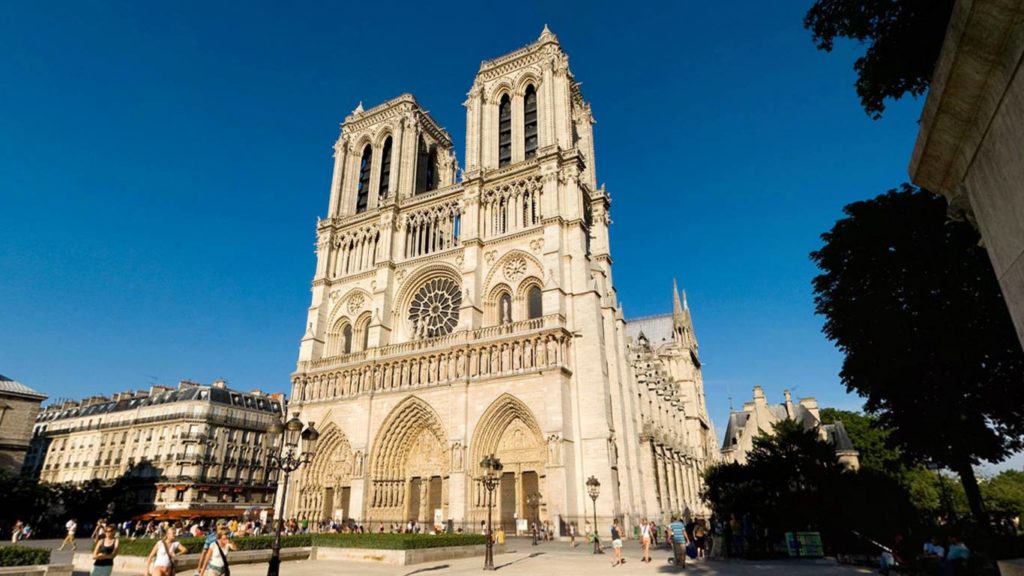
Cathédrale de Notre Dame de Paris (Our Lady of Paris, in English) is one of the most important Cathedrals in France and one of the most popular Cathedrals in the world. It reflects the born of Gothic Architecture style by being one of the first Cathedrals built under this style.
Its conception comes from a social need, a need of a new symbol for a new social and political power and by 1160 the church of Saint Stephen (where Notre Dame Cathedral is now located) was looked upon as obsolete; it simply couldn’t really display the prestige of a fast-growing urban society.
>>Must-See Cathedrals in Paris
The Eiffel Tower
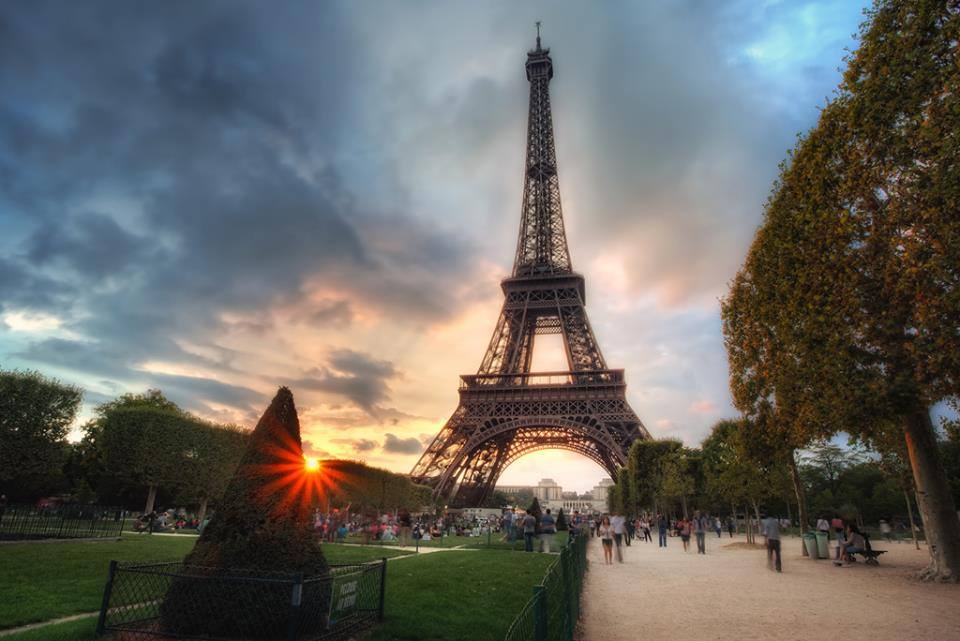
The Eiffel tower is famous for being the most visited paid-monument worldwide. It was once famous for being the tallest structure on the planet for 40 years until 1930; when the Chrysler Building in the United States was built.
This tower is one of the most visited attractions in France. It is recognized worldwide as one of the most important symbols of this country.
>>Facts About The Eiffel Tower
Champs-Elysees (Elysian Fields)

The Champs-Elysées, located in Paris is probably the world’s most famous avenue. Many major events such as the military parade of July 14 and New Year’s Eve celebrations take place here. For sports lovers, it is the place where the Tour de France finishes each year. Also, it is the benchmark for fashion lovers because the majority fashion houses cant be found there, and surely an incredible romantic street full of people, both day and night. The name is taken from “Elusia” that in Greek mythology meant a place where heroes come to relax.
Arc de Triomphe
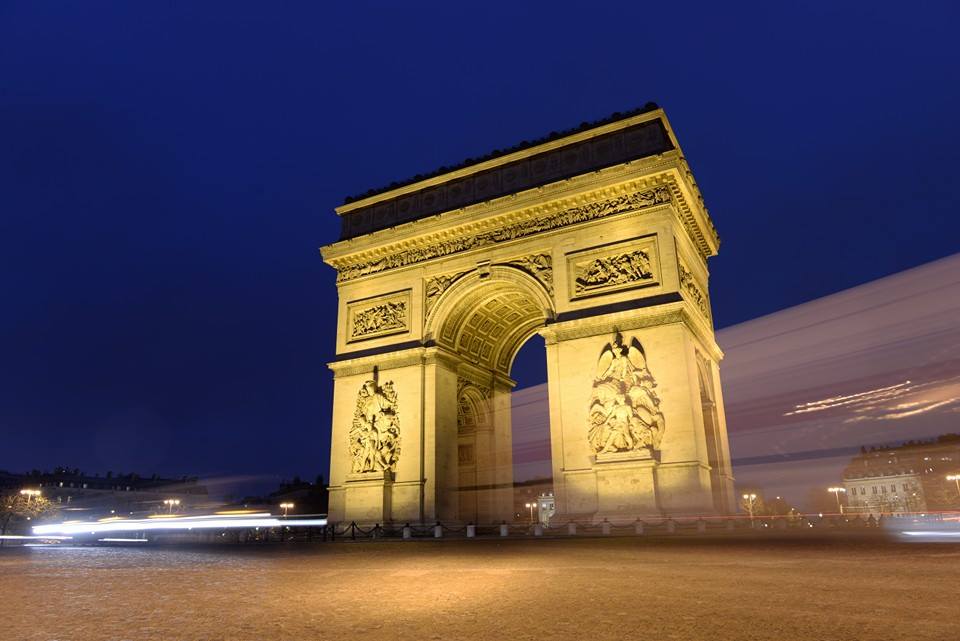
The Arc de Triomphe is one of the most spectacular monuments in Europe. It stands in the center of Place Charles de Gaulle, also known as the Place de l’Etoile.
Its construction began in 1806, per order of Napoleón to honor those who fought for France, particularly during the Napoleonic Wars; today it also includes the tomb of the unknown soldier.
Chapelle Expiatoire

The garden area of Chapelle Expiatoire began in 1720 and was used as the new cemetery of the church of La Sainte Madeleine. In 1770, it was used to bury the 133 people who were killed in an accident happening from a fire and stampede that happened at a fireworks show during the wedding of the dauphin, Louis, who was to become Louis XVI and Marie Antoinette.
The bodies of more than 300 Swiss were buried in this cemetery of what was to become the grounds of Chapelle Expiatoire. They were slaughtered while making a heroic stand to protect the Tuileries Palace from a mob. The expiatory chapel was built in 1815 on the orders of the late king’s brother, Louis XVIII.
The Chapelle Expiatoire was built on three levels, there is an entry hall that leads to an enclosed area. The area is of simple design, planted with roses and flanked with gravestones in remembrance of the dead.
Conciergerie
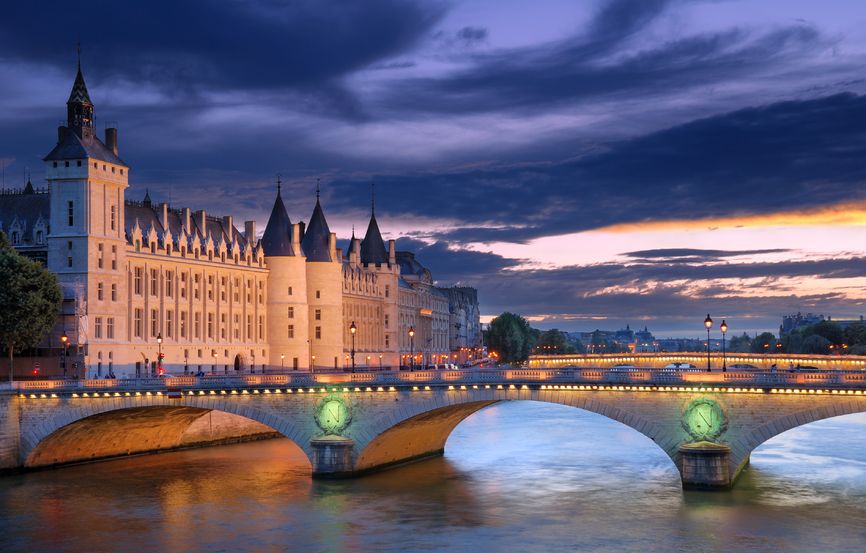
On the banks of the River Seine in the heart of Paris, you can visit the Conciergerie. This is the most ancient part of “Palais de la Cité”, it was used as a prison during the French Revolution; becoming the first royal palace in the French capital. In the beginning, the Conciergerie was part of the palace of the Kings of France. Later, it became the first Paris prison in 1391, and its popularity grew during the 1789 French revolution.
>>Also Read: Best Things To Do In Paris
Domaine National du Palais-Royal
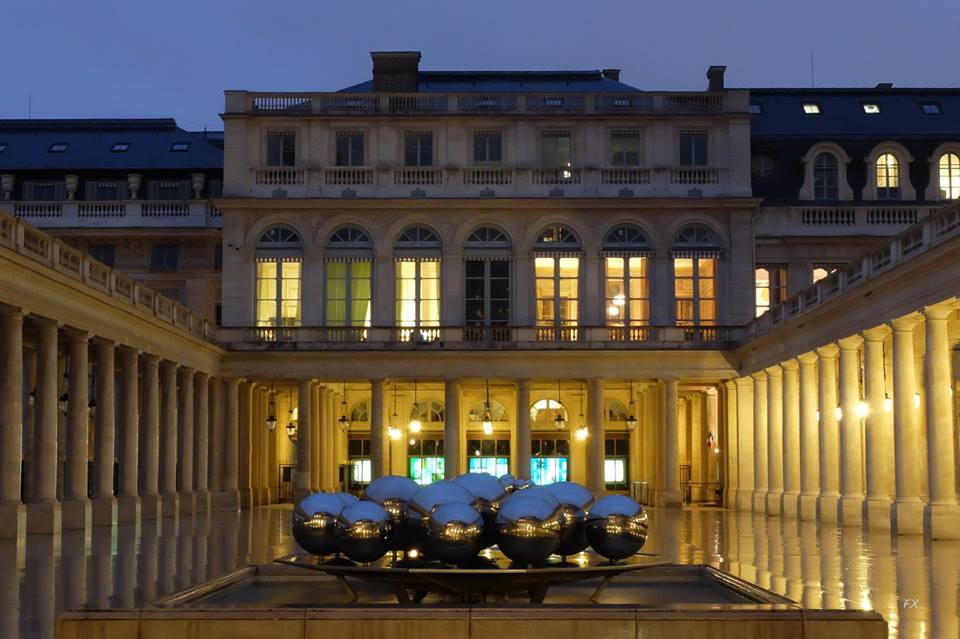
At first, its name was the Palais-Cardinal; later, it was converted into a royal palace after the cardinal gave the building to King Louis XIII. Louis XIV, the Sun King, spent his early years here before moving to the nearby Louvre and later to Versailles. For four centuries, it has been a seat of power and place of pleasure and, since 1986, containing Daniel Buren’s site-specific art piece.
Hotel de Béthune-Sully
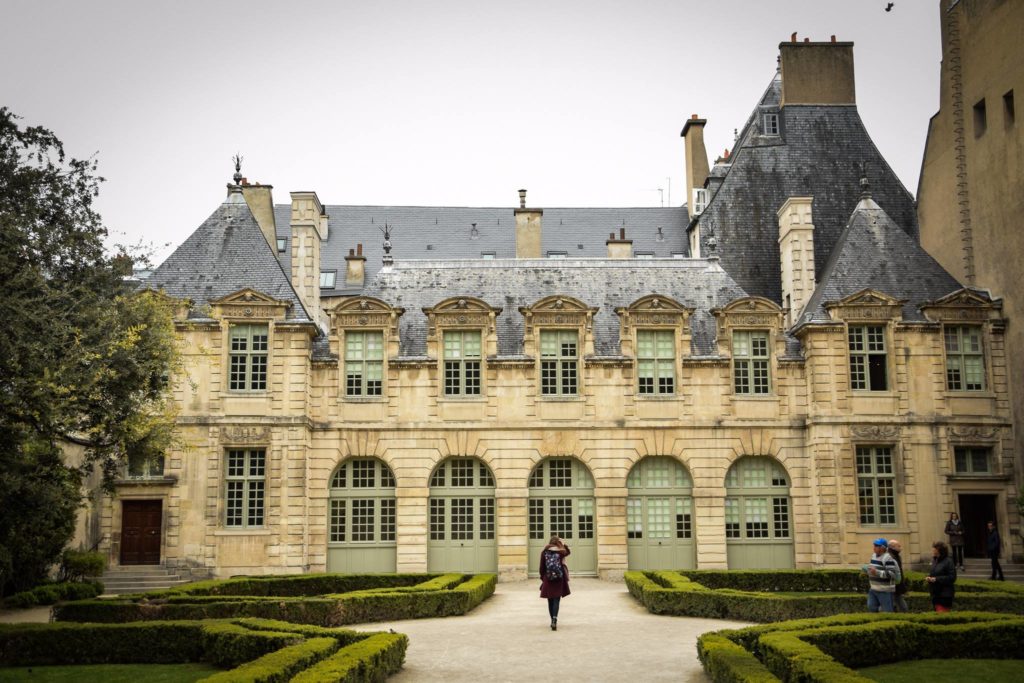
Between the courtyard and garden, the Hotel de Sully is one of the finest mansions in Paris. This monument of the 17th-century was the home of Superintendent of Finance of Henry IV, Maximilien de Bethune, Duke of Sully.
Sully hosts since 1967 the seat of the Centre of National Monuments. The courtyard hosts its Information Center. The library is accessible to all. Installed in the large parlor, one can observe the ceiling beams and joists painted. The garden, originally consisting of embroidery plant, provides access to the Place des Vosges.
Musée des Plans-Reliefs

The Army Museum is located in the Hotel des Invalides; this museum displays a magnificent collection of maps and relief models of France. Surprisingly, its development began in 1866 and became the oldest map of the town of Perpignan. Louis XIV founded the collection as a way to get a visual idea of his troops location throughout the country. It was considered “top secret” state information (not to be seen by the public eye). Finally, the museum opened to the public in the 1950s, when the information maps and models could be broadcasted.
Panthéon

Originally the Pantheon Paris was a church. Its construction started in 1744 but wasn’t actually finished until 1789, in this time the churches were not popular anymore; instead, this building became a temple honouring various historical French figures. After many changes, it now combines liturgical functions with its role as a famous burial place. Originally, The church was dedicated to St. Genevieve.
The masterpiece of the architect Soufflot, on the Montagne Sainte-Geneviève in Paris. Discover the famous people buried in the mausoleum who marked the history and identity of France. Appreciate the extensive views over Paris from the external colonnade of the dome.
Sainte-Chapelle
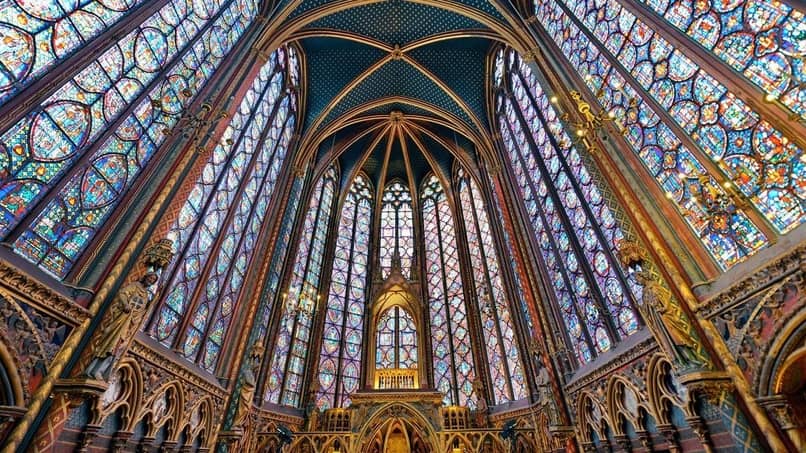
The King Louis IX of France founded Sainte-Chapelle, who constructed it as a house to have precious relics and a chapel for the royal palace. In 1246, it was built during the Middle Ages by Saint Louis, the King of France. In the beginning, the Sainte Chapelle was built as a shrine for Jesus Christ’s thorn crown; later, the crown was transferred to Constantinople, now Istambul.
The Middle Age churches with their painted walls are represented by the interior of the Sainte Chapelle, considered the finest royal chapel to be built in France and features a truly exceptional collection of stained-glass windows. The monument is a gem of French Gothic architecture, designated world heritage site by UNESCO.
Most Famous Monuments in Avignon
Avignon is not only an administrative center, is a showcase of the artistic and cultural foreground. Avignon is also a city with a rich heritage.
These are primarily the forts of the 14th century that we see when we get near the center. They are approximately 4 km long; lined by 39 towers and pierced by seven main gates located around the old city. The old moats were filled and turned into parking lots.
>>Also Read: Avignon Travel Guide
Le Palais des Papes
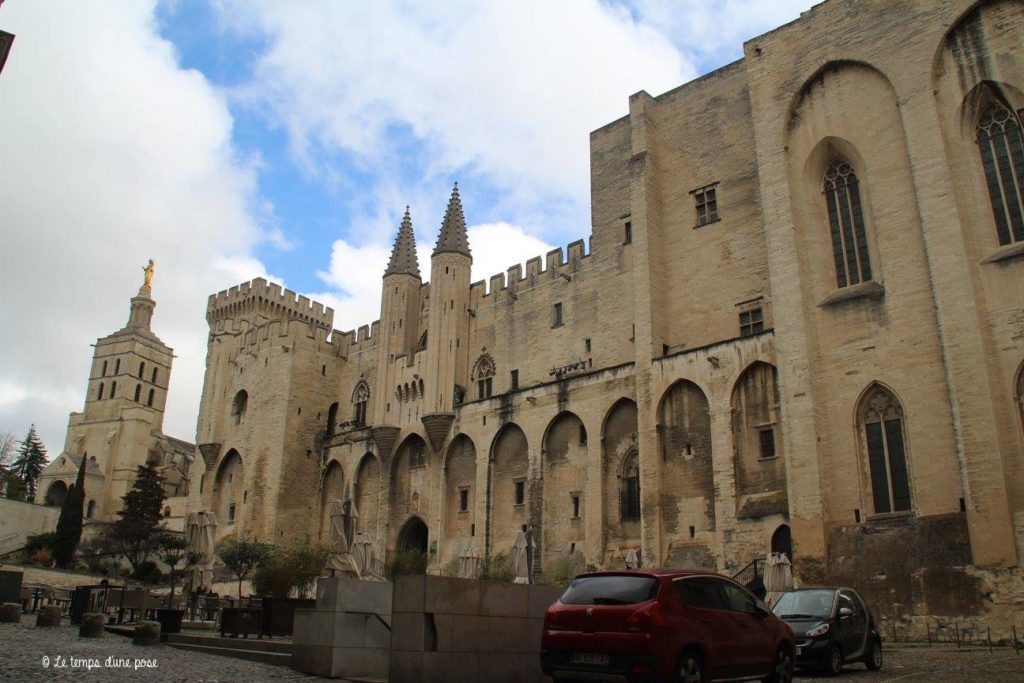
The Palais des Papes called the Popes’ Palace, is the most emblematic monuments in Avignon. The monument was classified as World patrimony of the UNESCO, between 1335 and 1352 was built the Popes’ Palace. It is the vastest Gothic group of Europe with its 15 000 square meters. This place has a lot of mystical, you will enjoy their luxurious Gothic frescoes, and maybe golden statues of the apostles hidden in the Palace by the last Pope or will discover at the ghost of the alchemist Pope.
The Palais des Papes is the symbol of the radiation of the church on the Christian West in the 14th-century. The construction started in 1335; in less than twenty years, it is the leadership of two builder popes, Benedict XII and his successor Clement VI. The most beautiful place at the level of interior decoration is the room of the pope. Apparently, he slept with his aides, some birds, and pets, and keeps her exceptional room frescoes and wooden ceilings.
>>Also Read: What is Avignon Famous For
Saint Bénézet Bridge – Pont d’Avignon
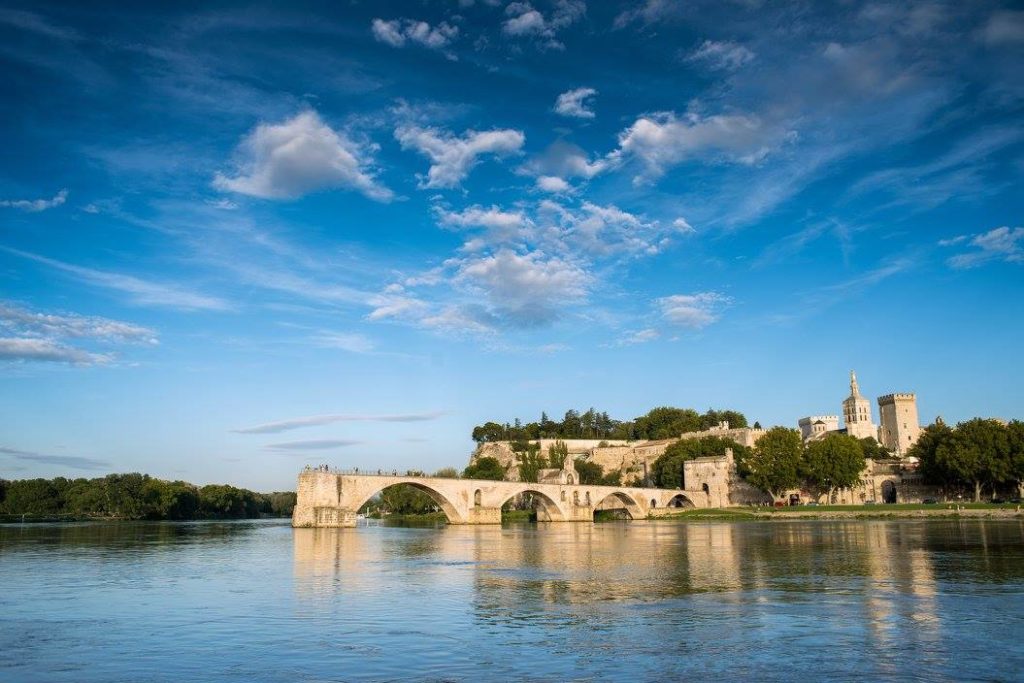
The legend of Saint Bénézet was a very young herdsman when he received the divine order to build a bridge that crossed the Rhone at the beginning of the 13th century. The young shepherd heard a voice and guided by an angel arrived to Avignon were built a bridge over the Rhône at Avignon by order of the voice. And with the help of the inhabitants convinced by the divine message, they began to construct the building.
In 1603 is a first arch collapses, then 3 more in 1605, largely due to heavy floods of the Rhone, but also the neglect of the king, who at the time possessed a large extent. At each pass over the bridge, the popes were accustomed to make a stop in front of the chapel to pray Benezet a moment and leave a handout of a florin. In 1628 the repair of 4 arches began, interrupted by an outbreak of plague, the bridge will not be usable until 1633. Then in 1669, it won a new flood several arches, leaving behind her part, those that can be admired today.
Most Famous Monuments in Bordeaux
Bordeaux is one of the most important historic cities in France and can claim plenty of fascinating and unique historical and spiritual monuments. Many of these local monuments date back to the period architecture was at its best during the 15th century. All of the monuments offer panoramic views over Bordeaux and are a great way for visitors to get their bearings. Bordeaux’s main landmarks and monuments are shown here.
>>Also Read: Bordeaux Travel Guide
Esplanade des Quinconces
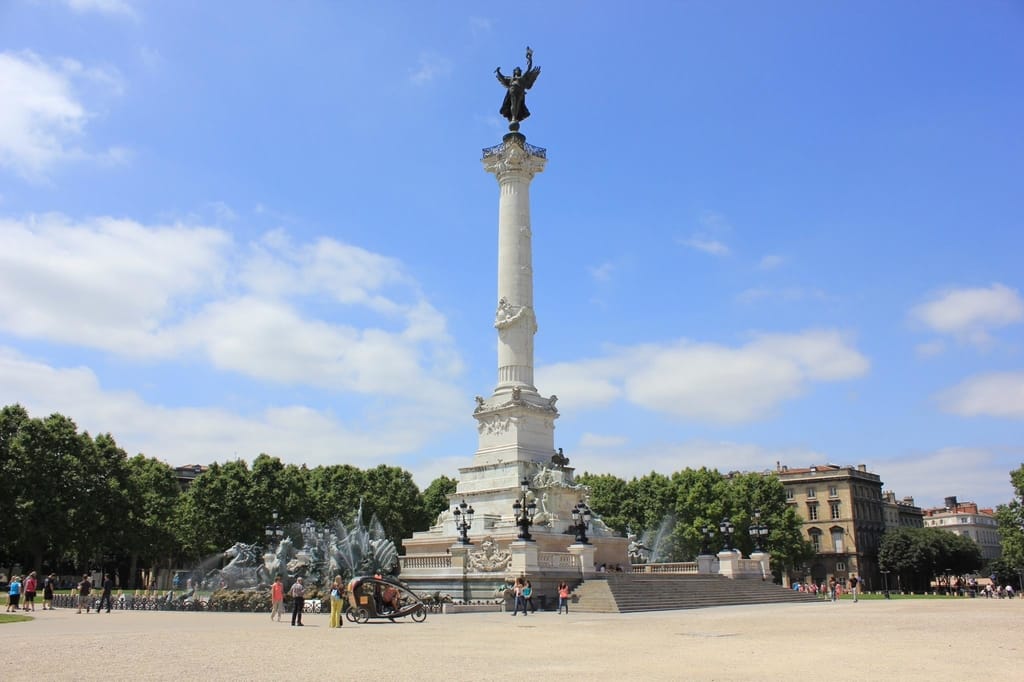
The most noticeable characteristic of Esplanade des Quinconces is the fountain memorial to the Girondins, a group of moderate, middle-class National Assembly deputies during the French Revolution, 22 of who were beheaded in 1793 after being sentenced for Counter-Revolutionary ventures. The entire 50m-high ensemble, completed in 1902, was destroyed by the Germans in 1943, so the statues could be melted down for the 52 tonnes of bronze. The restoration took years and was not completed until 1983. To the northwest is the Botanical Garden, with Natural history museum and the Jardin Public. Two figures of Bordeaux are also honored on the square since 1858, with statues in their likeness, a former mayor of the city, Montaigne, and a former member of the Parliament of Bordeaux, the author of “The Spirit of Laws” Montesquieu.
>>Also Read: What is Bordeaux Famous For
Pont de Pierre
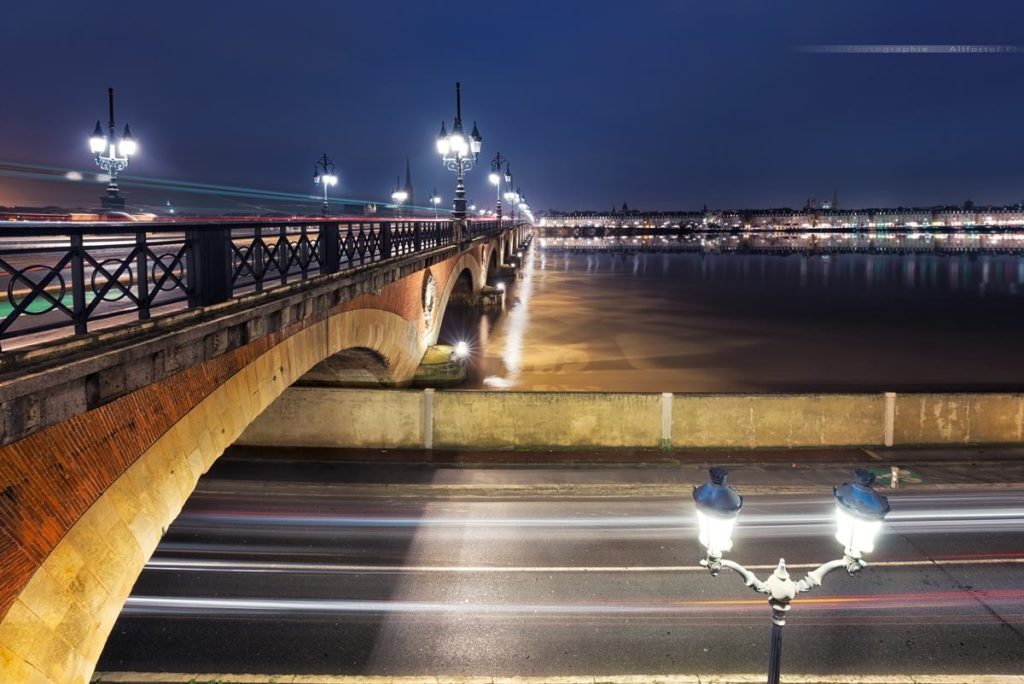
The monument that connects Bordeaux’ left bank to the right bank is the Pont de Pierre, also is the link between the esplanade and the Sainte-Marie-de-la-Bastide church. The ‘Pont de Pierre’ was commissioned by Napoleon I. It ended in 1822. The tram goes from bank to bank on these days along this bridge. The Unesco named it as world heritage being definitely one of the most beautiful bridges in France, its beauty is only comparable to the ones in Paris. This area covers 1810 of the total 4455 hectares of the city. It is really quite vast, which is over 500 meters long.
>>Most Beautiful Bridges in Paris
Most Famous Monuments in Cannes
La Croisette
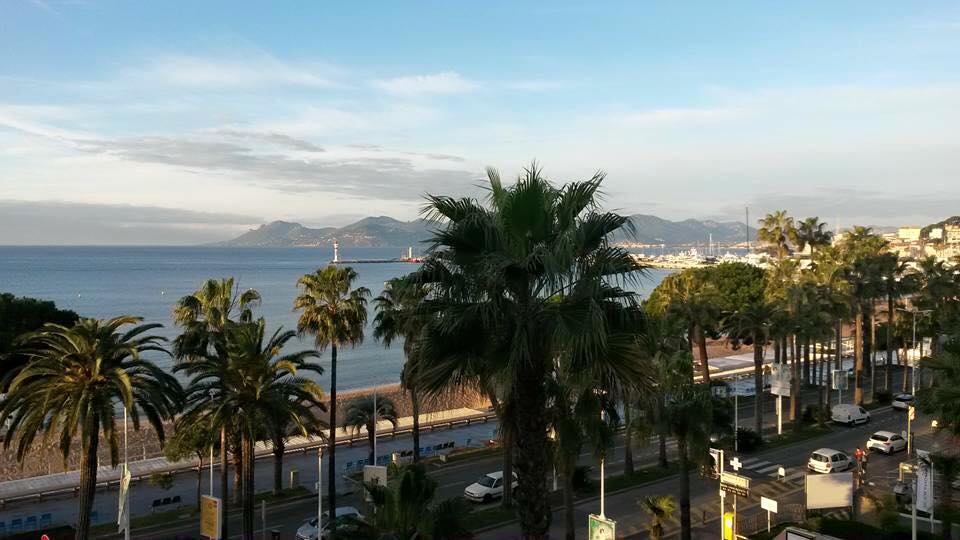
The Boulevard de la Croisette is the center of tourist activity in Cannes, which extends eastward from the new Palais des Festivals along with the Rade de Cannes, with its fine sandy beach. Created during the 19th century, it is a prominent road that extends along the coast of the Mediterranean Sea and is approximately 2 km long. The Croisette is famous for the Palais des Festivals et des Congrès, where the Cannes Film Festival takes place. Several expensive shops, restaurants, and hotels line the road. There can’t be a more appealing spot to simply watch the world go by.
Abbaye Notre Dame de Lérins
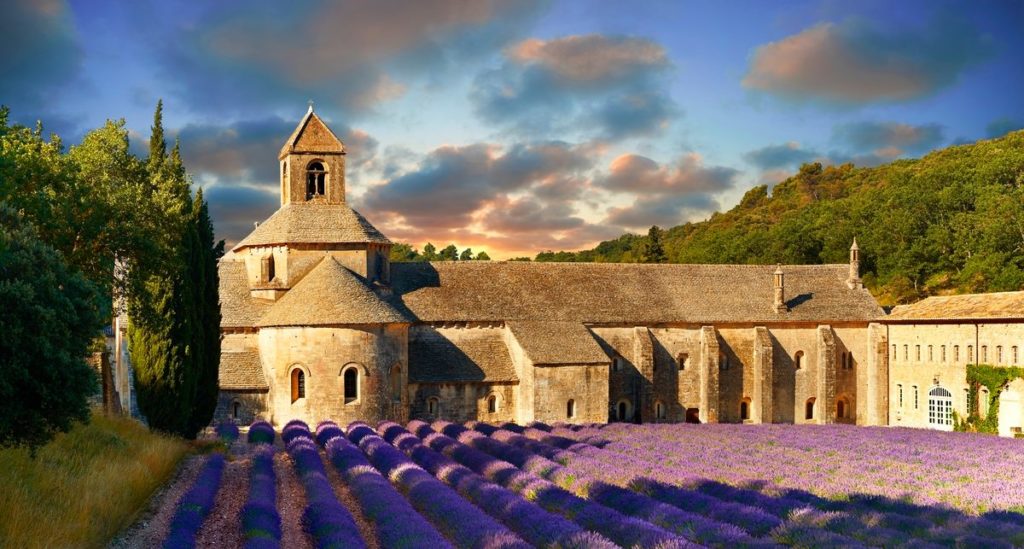
The construction of the fortification of the Abbey of Notre-Dame de Lerins is an exotic monastery, is located on lle Saint Honorat, which began around 1050, continued for three centuries. The chapel of the Trinity came in the 9th and 10th centuries. Off the bay of Cannes, on the Ile Saint Honore, the Abbey of Notre-Dame de Lerins is the residence of 25 Cistercian monks affiliated with the Cistercian order. Since the 16th century, the monks of the Abbey of Notre-Dame de Lerins operate on the island of Lerins culture of the vine.
Notre Dame d’Esperance
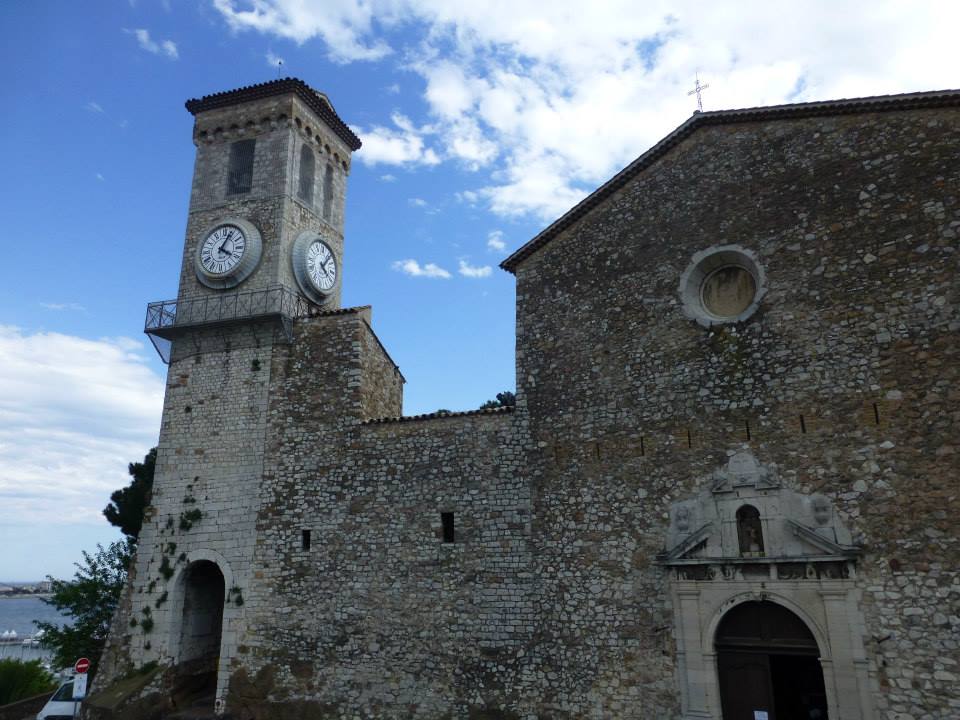
Notre-Dame d’Esperance is one of the most beautiful Provencal Gothic churches, this monument was completed in 1648. Its attraction lies in its wood paneling, which dates back to the 14th and 15th centuries. The collection of 19th-century paintings that Portrays the baptism of Christ, a fresco by George Roux that deserves to be seen by everyone. Also worth checking out the Statues of Saint Anne and Notre-Dame d’Esperance that was carved in gold-leafed wood from the 15th and 18th centuries. You can enjoy a fabulous view of the town and its bay situated on top of Suquet hill in old Cannes. One of fishermens’ favourite saints, Notre-Dame d’Esperance, is also called upon to heal the sick.
St. Michel Archange Church
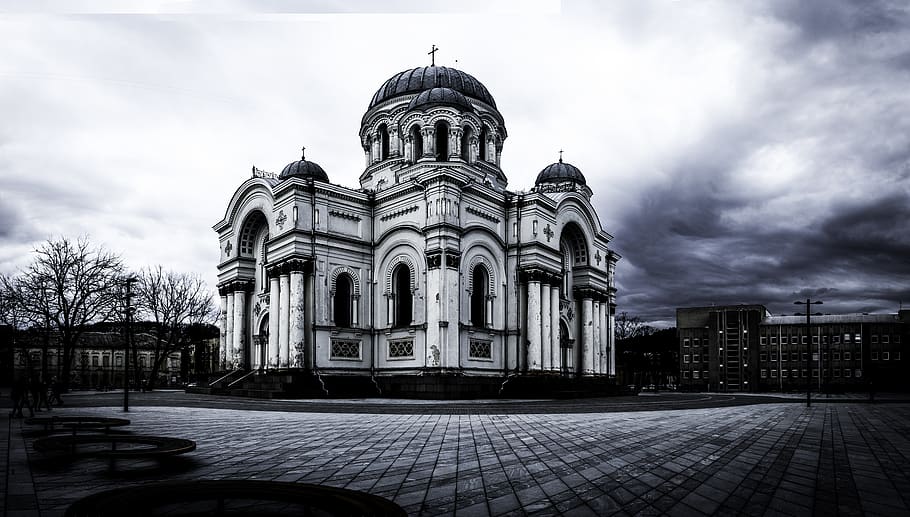
The Orthodox Church of Saint-Michel Archange was built in 1894, at the end of the 19th century based on plans by the architect Louis Nouveau. This monument is inspired by Russian tradition. St. Michel Archange Church, with Grec cross design, features a stunning glazed-tile roof with an onion dome and a rather magnificent tile roof. It was built for the Russian empress Maria Alexandrovna, wife of Czar Alexander III, who would occasionally spend the winter in Cannes.
Le Grand Jas Cemetery
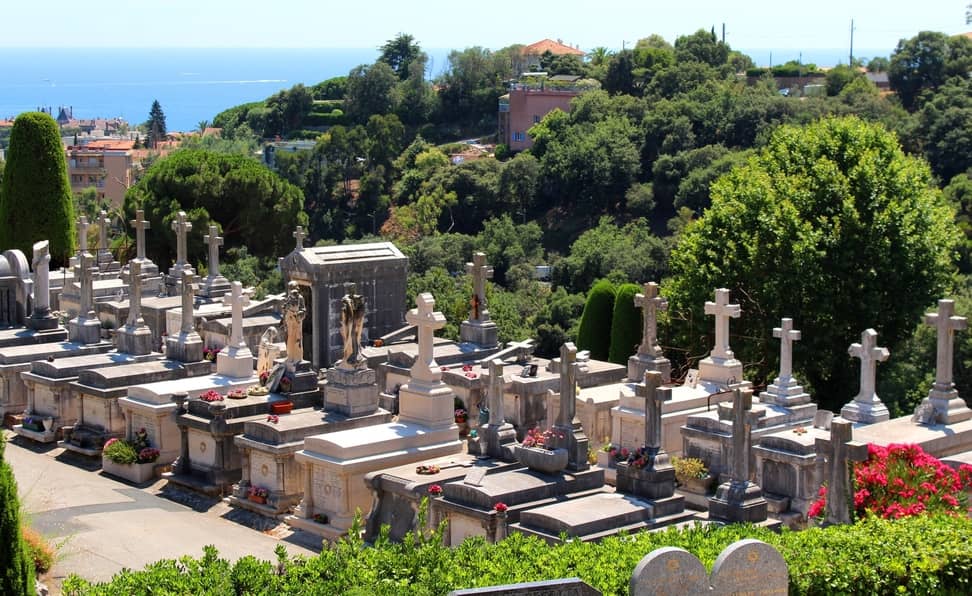
When you go to Cannes, you cannot miss the nine hectares of Le Grand Jas cemetery. All the history of Cannes lies here. You can find leaflets listing the graves of famous people in an office just outside the main gate where are from Lord Brougham to Charles Fabergé. Le Grand Jas Cemetery in Cannes was built in 1866. This monument is the largest and most ornate cemetery in all of the south of France, also has many memorable mausoleums, including Louis Pasteur and Picasso’s first wife, Olga Khoklova.
Most Famous Monuments in Dijon
The Palace of the Dukes
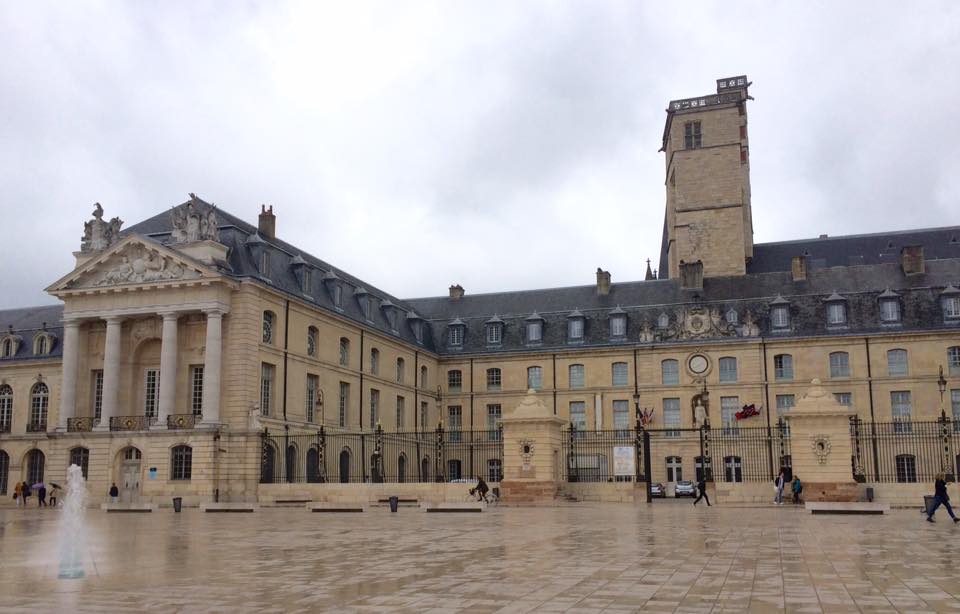
Initially a Gallo-Roman fortress during the 9th century, it was rebuilt several times being the first time in 1366 by Phillip the Good, then it was enlarged starting on the 15th century turning it into a Duke’s Palace.
This outstanding architectural marvel is in very good condition and nowadays serves as both the Dijon Town Hall and the Museum of Arts. It includes the seat of the Dukes of Burgundy, the Terrace with a panoramic view, the ducal kitchen, the residence of the Duke, plus different rooms.
>>Also Read: Is Dijon Worth Visiting
Saint Michel Cathedral of Dijon
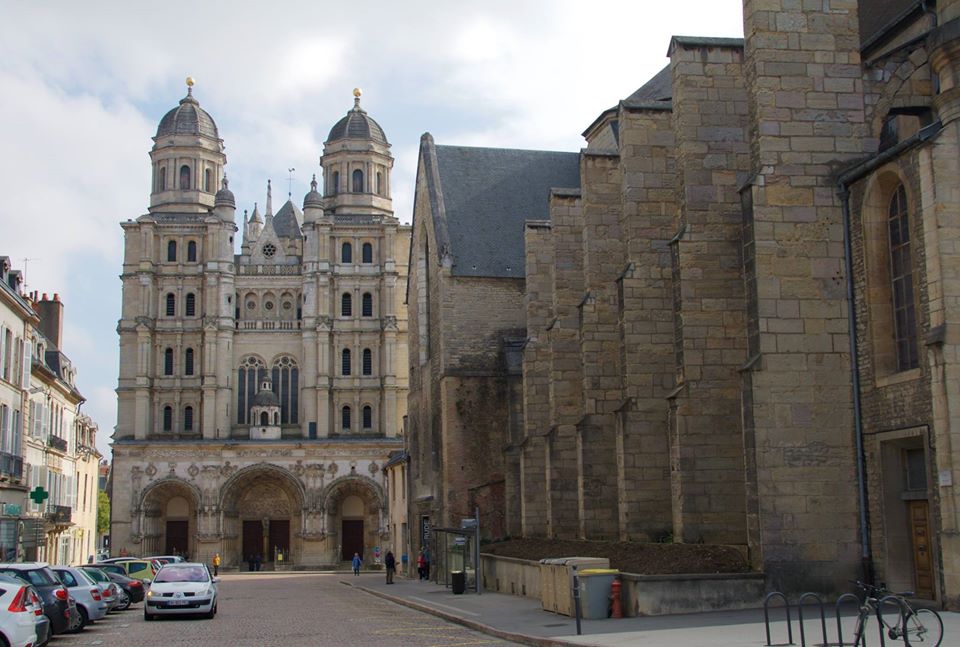
This beautiful cathedral was dedicated to the martyr and patron of Dijon Saint Benignus of Dijon. It was built at the end of the 13th century and the beginning of the 14th century (1280-1325). Saint Michel Cathedral displays a gothic architecture, and it is considered one of France’s monuments. It survived a fire in the town and has suffered different accidents. It was in this cathedral that the burial of Phillip the Good, the Duke of Burgundy, took place.
Notre Dame Church
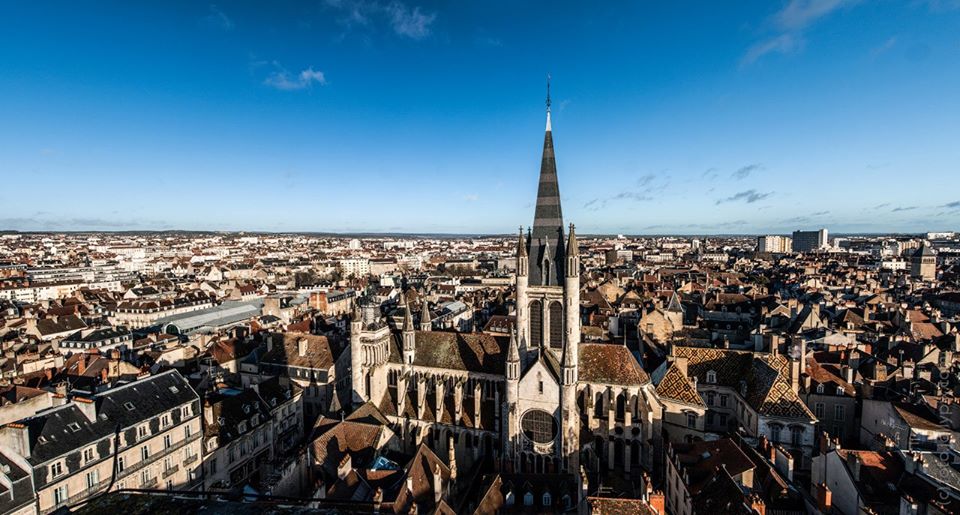
Built in the 13th century, this Gothic church is a famous French monument that contains the Black Virgin, which is considered a very old wooden sculpture in Europe and a treasure of Dijon town. This church displays a clock tower, two galleries, and gargoyles.
The gargoyles that can be seen now are not the original ones. As a matter of fact, they are replacements for the original one and were place at the end of the 19th century. The clock tower displays mechanical figures, and it was built in 1382. Notre Dame church has survived many accidents, including a fire.
Most Famous Monuments in Lyon
>>Also Read: Lyon Travel Guide
Basilique Notre-Dame de Fourvière

The magnificent Fourvière Basilica is located at the top of the Fourvière Hill. Its name may come from the first residents of the hill: the Romans, who called the hill Forum Vetus. These monuments are pretty modern. The architect Bossan built in the 19th century. The basilica is known as the “upside-down elephant” because of its 4 octagonal towers. Its structure is a rather strange mix of architectural styles, including oriental, oriental, neo-classical, and medieval influences.
>>Also Read: What is Lyon Famous For
Bartholdi Fountain
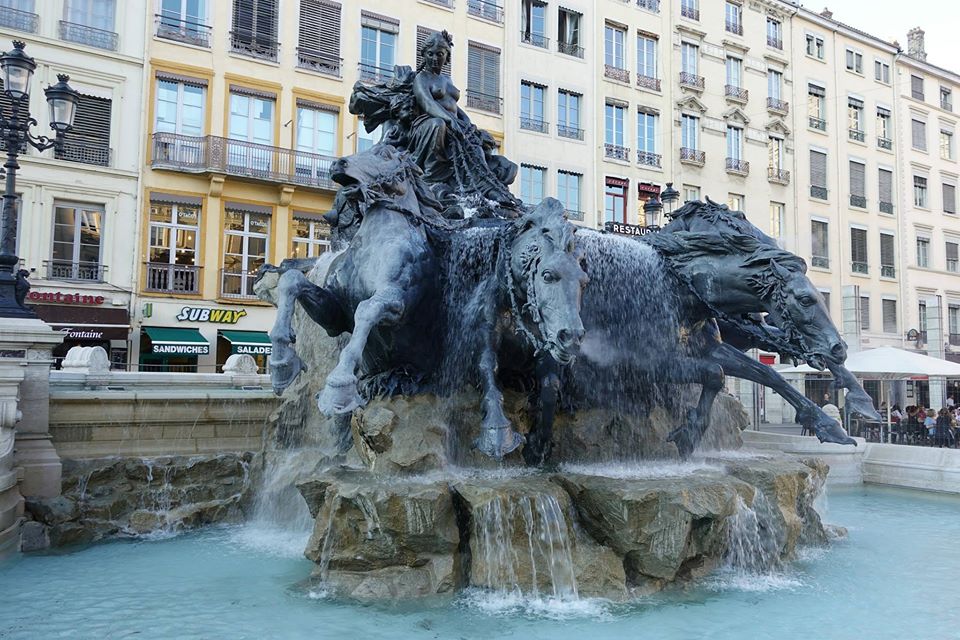
The Bartholdi Fountain is an impressive public fountain that is located la place des Terreaux, this square is the heart of Lyon’s civic life. This monument was designed by Frédéric Auguste Bartholdi in 1889, who later created the Statue of Liberty, it illustrates the rivers flowing into the ocean. The fountain has a tremendous amount of detail, and the four horses seem very real, which represent four rivers racing for the ocean, pulling the chariot forward. This a pleasant place to stroll during the day and in the evening with its contemporary fountains and illuminations that have recently been added.
Tour Métallique

The metal tower is a monument Fourviere which adjoins the basilica Fourviere. This monument is a round metal structure with a size of 85.9 meters and weighing 210 tonnes, of which the architecture is similar to the third floor of the Eiffel Tower in Paris. Built on the basis of a plan Mr. Colonge, on the grounds of the Gay family, we place a restaurant at the top, because the altitude hollow appetite is well known, which you could access by a Roux-hydraulic lift Combaluzier 22 places articulated piston, 70-meter race. It remains the highest point in Lyon, culminating at 372 meters. The elevation of 350 m above the Saône is the same between the top of the Eiffel Tower and the Seine.
Lyon Opera House
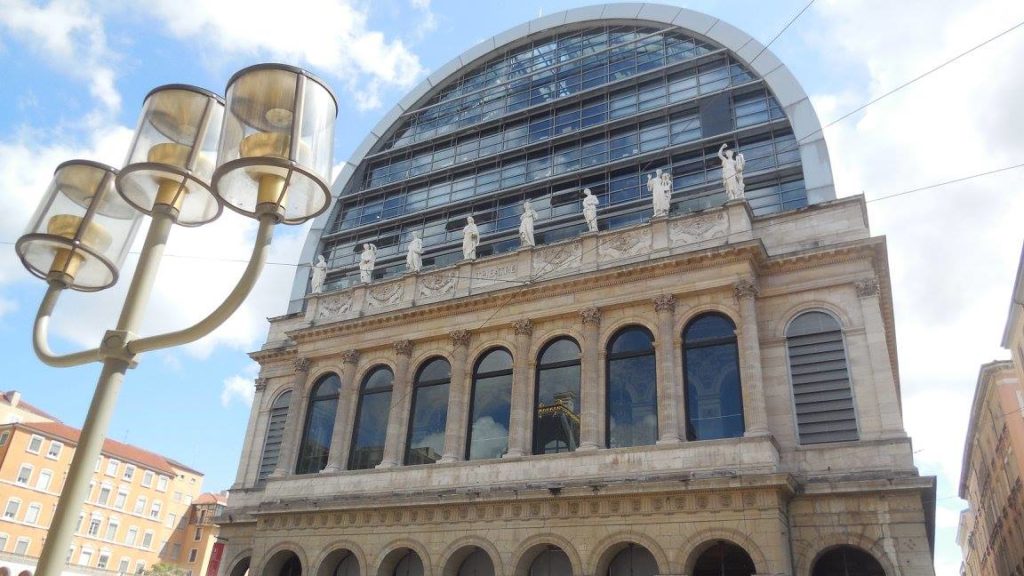
In the 18th century, Soufflot built the first theater; however, the theater soon became too small, and the architects Chenavard and Pollet rebuild a brand new one in a neo-classical style in 1830. Jean Nouvel renovated the opera house completely, during the end of the 19th century, who also created a tall, iron and glass barrel vault that added a substantial amount of space that was not there before; then he dag new levels and added a dome that is used by the dancers. It added eleven new levels, the six higher levels are encased in the vaulted glass while the first five levels of the opera house are underground. On the opera house fronton, 8 muses have been placed. The opera house dome offers a beautiful view of the town hall and the Croix-Rousse district.
Place Bellecour
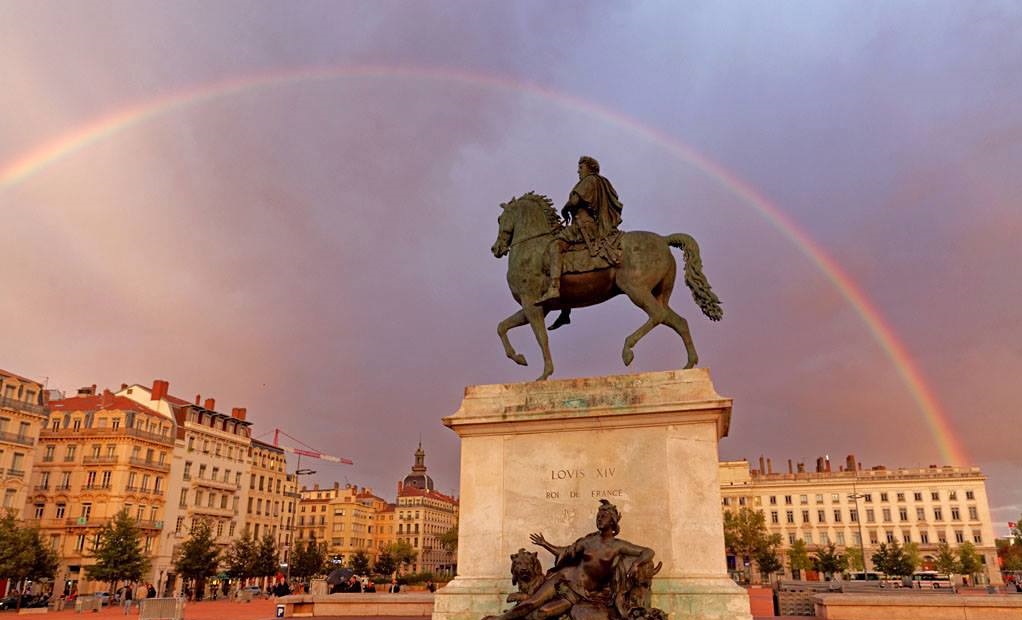
Place Bellecour is a huge square covered with red gravel, is located between the Rhône and the Saône, with an equestrian statue of Louis XIV by the Lyons sculptor F. Lemot. Place Bellecour is the fourth largest square in France with its 310 meters long and 200 meters wide. The place is a large pedestrian area with its center, an equestrian statue of Louis XIV from 1825, designed by Frederic Francois Lemot. When the statue arrived to the city of Lyon, the whole city was full of popular festivals and grand ceremonies. Now, there are interesting shops along the perimeter of the square. I found one with unbelievable gastronomic delights made out of any kind of fish.
Fresque des Lyonnais
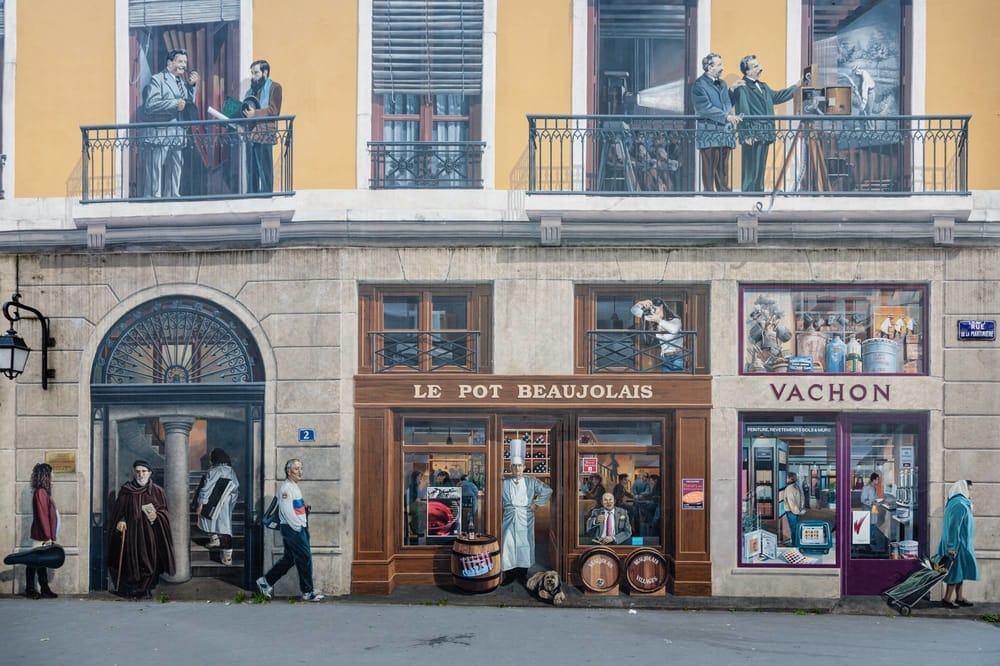
La Fresque des Lyonnais displays a 25 personnages historiques lyonnais and 6 personnages comptenporains with 800 m², this mural has 2000 years of history, was done by the City of Creation in 1994/95. To visit this monument, go in the 1st arrondissement of Lyon, at the corner of 49 quai St-Vincent and rue de la Martiniere 2. There are more than 150 enormous murals on walls all over Lyon portraying historical events or important people or simply creating a trompe l’oeil effect, being the best famous is La fresque des Lyonnais.
Most Famous Monuments in Marseille
>>Also Read: Marseille Travel Guide
Saint Victor Abbey
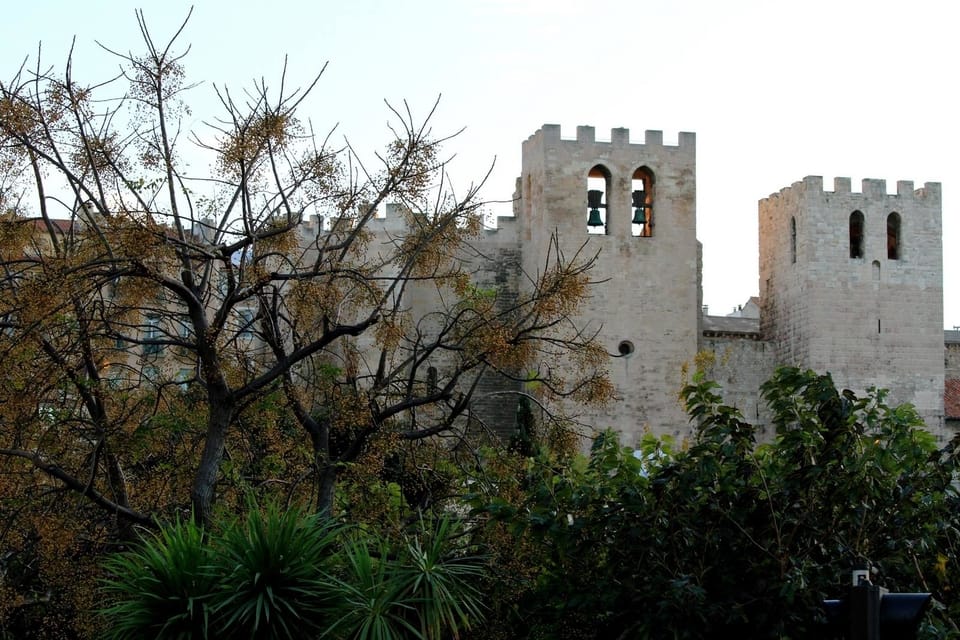
With a fortress-like appearance, this abbey attracts visitors from all over the world. It is named after the soldier Victor of Marseilles, a martyr, and a saint. It was first built in the 5th century only to be destroyed by Saracens sometime between the 8th and 9th century, and it was rebuilt in the middle of the 11th century, and in order to avoid a new destruction (it was located outside the city walls) the fortification of the abbey was necessary.
>>Also Read: What is Marseille Famous For
Saint Nicolas Fort

Built by Louis XIV to protect the harbor of Marseille, this fortification was, ironically, used by the same Louis XIV as the point from which cannons were set and pointed towards the town of Marseille when he started thinking the people of this town were part of the Revolution.
The building work finished in 1664 by Louis Nicolas de Clerville, who was in charge of Fortifications. The building was attacked by French revolutionaries in May 1790, but 10 days after the destruction of this fortress was ordered to stop because of the military value of this fortress.
Marseille Cathedral
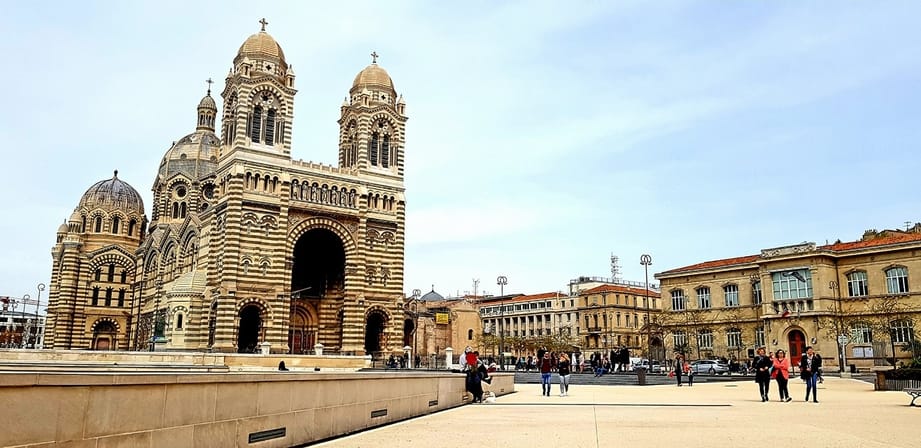
A Basilica Minor since 1896, it is also known as Cathedral Major, or Cathédrale Sainte-Marie-Majeure, built between 1852 and 1896. It is a Catholic cathedral and the seat of the Archdiocese of Marseille.
Displaying an impressive central dome (maybe the most attractive aspect of this cathedral) and both Romanesque and Byzantine beauty in its architectonical design, this cathedral was built upon another cathedral: The Old Cathedral.
Most Famous Monuments in Nice, France
>>Also Read: Nice Travel Guide
Saint Reparate Cathedral
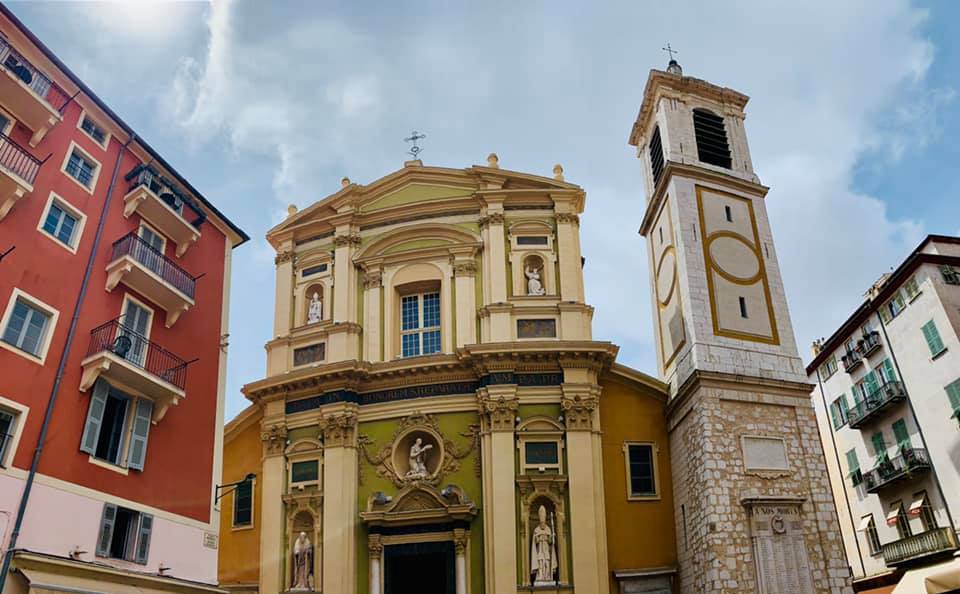
Cathédrale Sainte Réparate in French. This Catholic cathedral is the seat of the bishop and dedicated to Nice Patron-Saint Reparata. It was turned into a cathedral in 1590, and it started to be rebuilt in 1649, though it was not ready until 1757. Also, it has a wonderful bell and very interesting inside decoration. It has 10 chapels inside and a ceramic-covered dome. The most interesting thing about this cathedral is the martyr saint that gives it its name: Saint Reparate, a 15-year-old boy who, because of his Christian beliefs, decided not to obey the orders of the Romans and to not make sacrifices to official Gods. They tried to execute him two times, being unsuccessful and had to finally cut off his head.
>>Also Read: Is Nice Worth Visiting
Russian Orthodox Cathedral
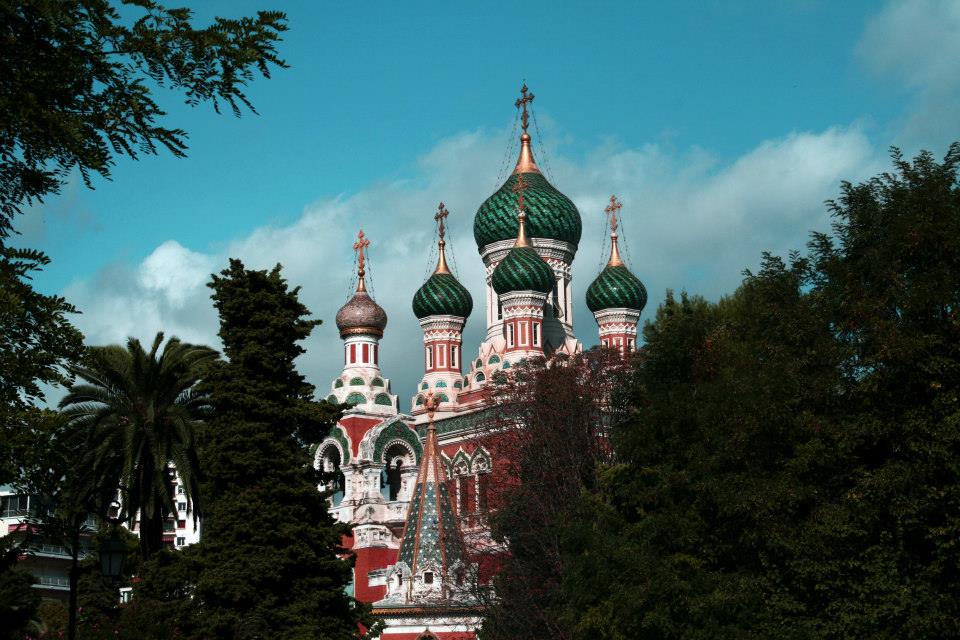
This French monument was opened in 1912 under the sponsorship of Tsar Nicholas II. There is currently a dispute over the ownership of the Cathedral; the dispute is held between the parish that occupies it and the Russian State. This cathedral is considered the largest Russian Orthodox Cathedral built outside Russian borders, and the main reason why it was built was to be on the service of the Russian Community in France. Frescoes and carvings are in display inside, but the main attraction is the architecture itself.
Monument Aux Morts
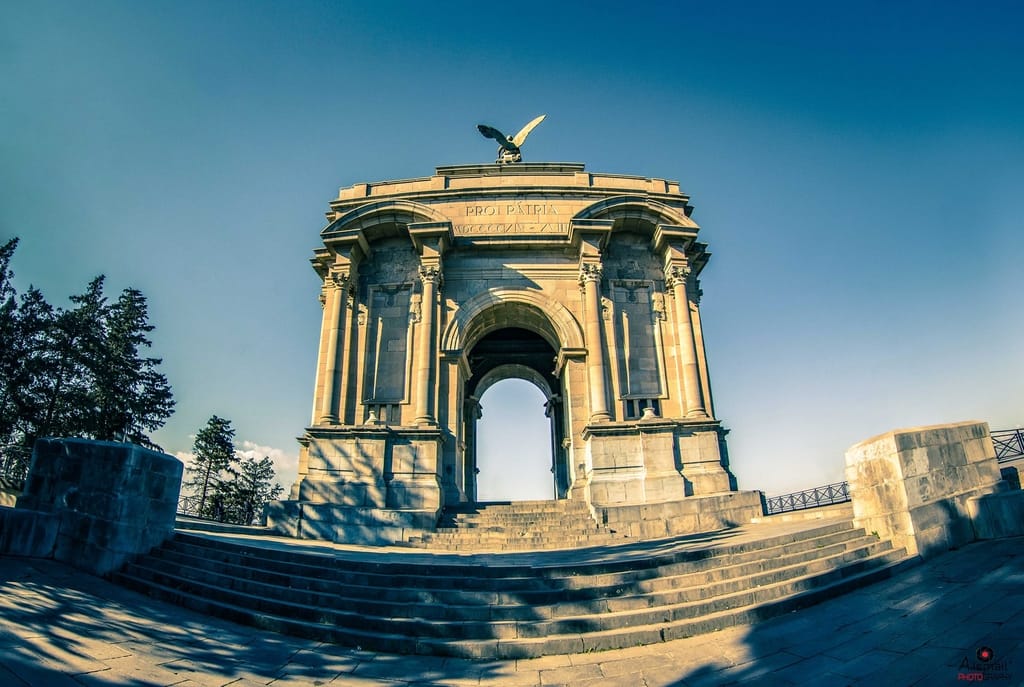
Maybe the most touching memorial built in France, Aux Morts, remembers the fallen soldiers from World War I. It commemorates over 3600 soldiers whose names are engraved and can be read on the monument as well as their registration codes in a reliquary. Aux Morts is built in white stone and decorated with high-reliefs by sculptor Alfred Janniot, it is the largest memorial built in France and especially touching since it faces the ocean.
Most Famous Monuments in Nimes
The Arenas (Amphitheatre) of Nimes
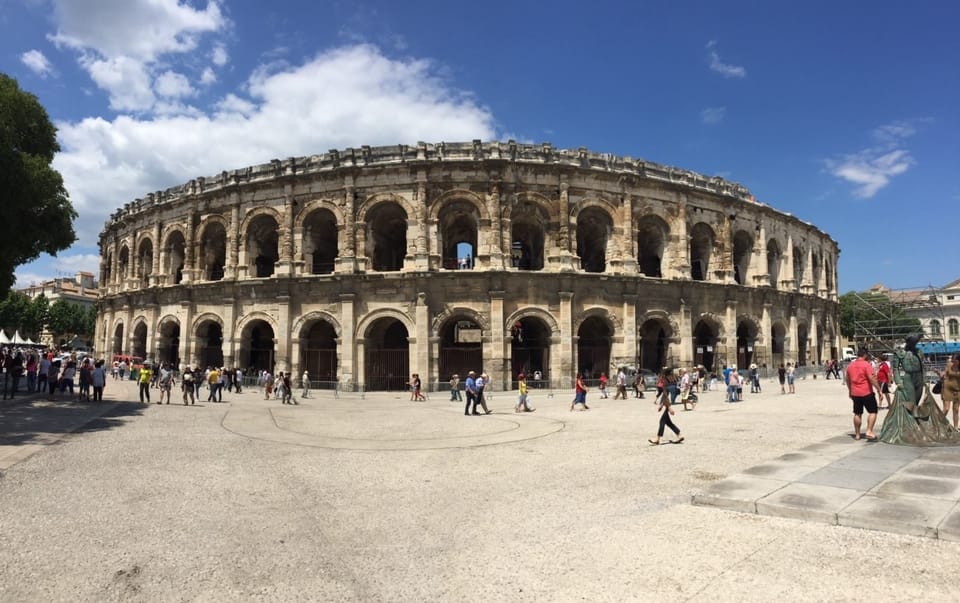
Built by the Roman Empire in 70 AC, and rebuilt in 1863 in order to become a bullring, this beautiful building is currently used for different local events as well as two important bullfight events per year.
The Arenas of Nimes gather an amazing and old history; they served Romans as an amphitheater, and later, under the dominance of the Visigoths, it was fortified only to be used later, as a palace by the viscounts of Nimes.
Opening and closing hours vary depending on the time of the year, though the opening hours fluctuate between 9am, and 10am. It is possible to drop off near the Monument, and rates also vary depending on whether you are an adult, student, child, coming on your own or as part of a group.
>>Also Read: What is Nimes Famous For
Maison Carrée

The Maison Carrée, also known as “The Square House”, is a beautiful masterpiece of arts and architecture. It is considered one of the Roman buildings in the best condition nowadays, and it was built in 16 B.C. It was dedicated to Catholicism later on. This building had many functions during the French Revolution.
The Maison Carrée is open for tourists at 10am and closing time varies depending on the time of the year. Rates also vary depending on the number of people and age.
The Magne Tower
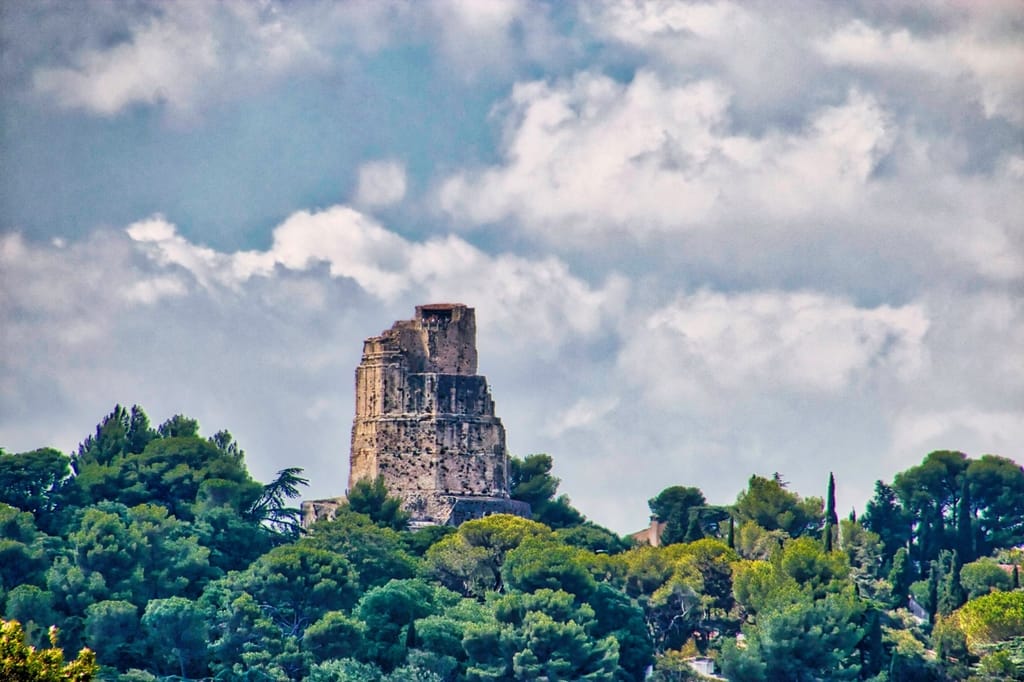
Located in Mount Cavalier, the Magne Tower will take you to the highest point in the entire city. It is the only tower still standing from Augustus’ time, and it played a vital role through Nimes history.
It is open between 9am, and 9:30am depending on the season, and costs depend on different things (age, group).
Most Famous Monuments in Toulouse
>>Also Read: Is Toulouse Worth Visiting?
Capitol of Toulouse

Built by the magistrates, the first and original building was constructed at the end of the 12th century to be a government building, and it has been redesigned many times. It currently serves as the town hall of Toulouse.
Its name is related to the Roman Capitol, its Neoclassical design comes from the 18th century and some areas inside it come from the 16th century. Interesting facts about the Capitol de Toulouse are that Duke de Montmorency was decapitated in its courtyard, and Jean Calas was interrogated in its bell tower.
>>Also Read: What is Toulouse Famous For
Roman Amphitheatre of Toulouse

This Gladiator Arena (also called “Purpan Roman Amphitheatre”) was built in the middle of the 1st century; together with the rest of Roman buildings in the area, and it was used for over 300 years.
It can be seen as the only ancient building that can be seen entirely standing in the city of Toulouse and, of course, there are many guided tours available, so you get a clear idea of its history and value.
Canal du Midi
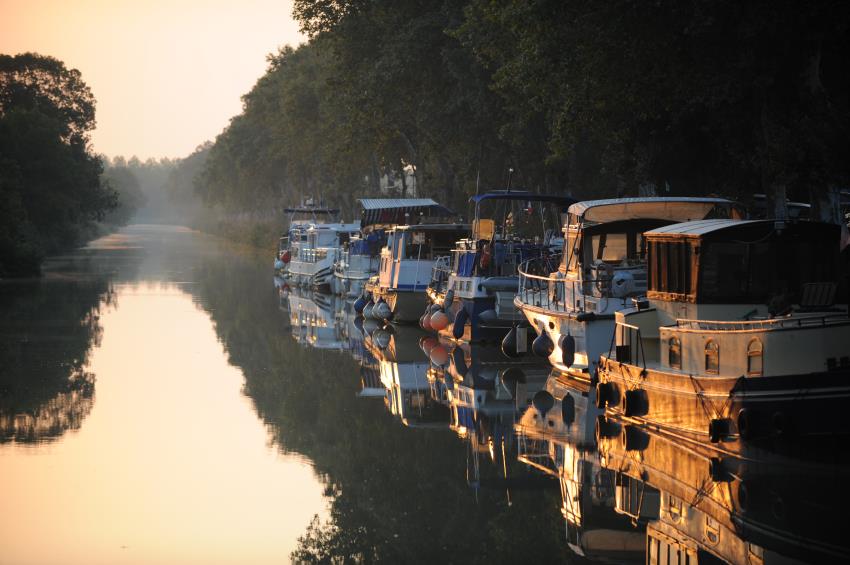
Registered by UNESCO as a World Heritage Site, this canal has a total of 240 km length. It joins Etang de Thau River with the Garonne River; the main idea of its construction was to shorten the distance between the Atlantic and the Mediterranean.
The possibility of building this canal was long discussed, but the project never started because of the difficulty of it. It was under the ruling of Louis XVI that the construction started in 1666. It has gone through different modifications in order to make it work better, for instance: When created, it had only three aqueducts, nowadays it has 40.
Most Famous Monuments in Strasbourg
>>Also Read: Strasbourg Travel Guide
Strasbourg Cathedral

“A delicate and gigantic marvel”, according to Victor Hugo himself. This architectonic beauty displays Gothic Architecture (though many parts of it still on display Romanesque architecture).
It is also known as Our Lady of Strasbourg Cathedral or Cathédrale Notre-Dame-de-Strasbourg in French. The initial style of the cathedral was Romanesque, and it started in 1176, but then the rest of the construction radically changed in 1225 when a team from Chartres decided to build it in a Gothic style. It was Erwin von Steinbach, who contributed the most in its building, starting in 1277.
>>Also Read: What is Strasbourg Famous For
Barrage Vauban

This weir was built at the end of the 17th century, around 1690, and it was built on the River Ill. It was designed by Vauban, as ordered by King Louis XIV, and Its main function was to support the town security by blocking the pass of enemy boats by lowering iron gates. Barrage Vauban was possible to regulate the water level in order to slow troops down. It offers a spectacular view of the Petit France and the cathedral from its terraces as well as sculptures (some of them replicas) that are on display in the main level.
Saint-Thomas Church
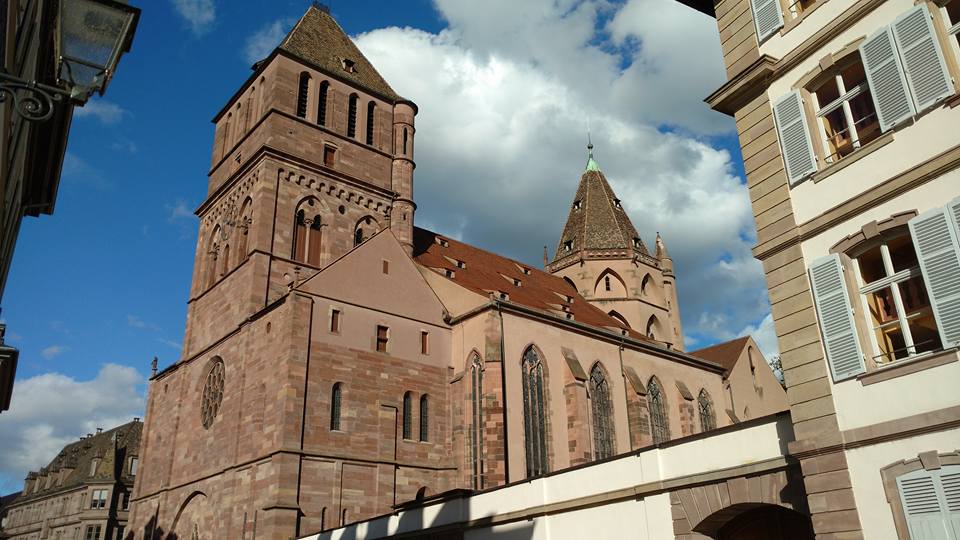
This culturally and socially important church has been declared a Historical Monument by the French Government. It is considered the most important Protestant Church. It is also known as the “Protestant Cathedral” or the “Old Lady” Church, and it is very popular for its organs and Gothic styles.
This church is very popular because of its tombstones and tombs. Saint Michael fresco is also an exhibit.
Most Famous Monuments in Saint Tropez
>>Also Read: Things to Do in Saint Tropez
The Citadel

Near the harbor district, you´ll find the Citadel, built somewhere between 1590 and 1607. It is a beautiful and old fortification with a modern relief of a ship´s cannon. The Musée de la Marine et de l’Histoire Locale is located within the fortress. Many tourists come to observe this beauty and get a nice view of the Gulf.
The Three Towers
Older than the citadel, three defensive towers of magnificent height can be seen in Saint-Tropez, built as defensive towers. They offer an amazing coastal view. They are called Portalet, Jarlier, and Guillaume towers. These towers are a must for every tourist who is looking for the architectonical and historic meaning of the city.
